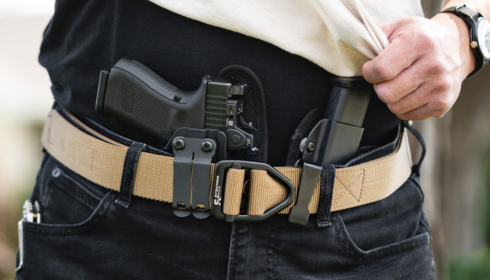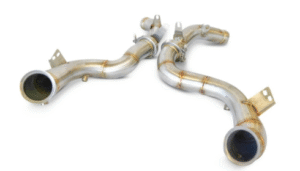Key Takeaways
- Concealed carry every day requires a careful balance of comfort, preparedness, and discretion to be effective and sustainable.
- Choosing the right gear, from holsters to attire, plays a vital role in both safety and concealment during daily activities.
- Consistent training and mental readiness are essential for both competence and confidence in everyday carry situations.
- Understanding legal considerations and ethical responsibilities is just as important as choosing the right equipment.
Why Comfort Matters In Everyday Carry
For anyone carrying daily, comfort is not just a luxury—it’s a cornerstone of safe and responsible carry. An uncomfortable holster, jacket, or even a poor choice of shirt can quickly discourage someone from carrying at all, transforming what should be a constructive routine into a hassle. Comfort impacts not only your physical ease but also your mindset throughout the day. For those seeking both functionality and subtlety, purpose-built concealed carry coats and jackets offer solutions that blend seamless concealment with lasting comfort, ensuring everyday carry becomes second nature rather than a burden. Whether navigating crowded sidewalks or driving across town, properly fitting attire means you won’t constantly be tugging or adjusting your gear, which helps to avoid drawing unnecessary attention and ensures your sidearm remains securely hidden and accessible.
Choosing The Right Gear For Concealed Carry
The process of finding the perfect concealed carry setup is influenced by various factors, including body type, fashion, climate, and activity level. Carry enthusiasts often test various holsters to assess their retention, accessibility, and comfort. Seasons can also influence the setup, with lighter holsters or shirts in summer and thicker coats and jackets in winter. Compatibility with one’s wardrobe is also crucial. Successful daily carry requires continuous adjustment and learning, as changing workplace environments, fashion tastes, and physical changes can affect the carry. Layering, breathable materials, reinforced belts, and specialized clothing can maximize concealment and comfort. Seeking recommendations, reading product reviews, and trying gear in real-world situations are common best practices. Building a versatile collection allows for easy adaptation to various activities. The key is not to settle for “good enough”; be willing to experiment and modify your setup to suit your lifestyle.
Training: The Foundation Of Safe Carry
Proper training is crucial for safe and effective carry, as it involves developing muscle memory and engaging in realistic practice. It goes beyond range, involving concealment, threat assessment, and reholstering under pressure. Integrating live-fire drills and dry-fire exercises enables the development of weapon manipulation skills and simulates real-world conditions. Effective training goes beyond shooting accuracy, involving daily carry clothing and holsters, movement drills, no-load drills, malfunction cleaning drills, and timed exercises. Keeping skills sharp boosts confidence, reduces the risk of accidents, and improves reaction times. Some carriers attend periodic advanced training classes to stay current with evolving best practices. Regular self-assessment and training evaluation are crucial, especially in environments that are constantly changing.
Dress For Discretion And Safety
Concealed carry is effective if it remains concealed, avoiding “printing” or visible firearm marks beneath clothing. Thin fabrics, improper fit, or accessories such as cell phones or wallets can cause it. Layering with jackets, shirts, or vests helps diffuse prints and provides extra protection. Patterns like plaids, stripes, or textured weaves can break up the carry form. Fitted clothing that allows you to easily reach without excessive bulk, balancing concealment and draw speed. Safety and discretion should be prioritized, and specialized coats and jackets can provide hidden compartments and reinforced areas. Adapt your wardrobe to suit the season, activity, and location to prevent unintentionally revealing your armed status.
Legal And Ethical Considerations
Concealed carry is a complex legal issue with varying requirements across states and cities. It’s essential to stay informed about permit regulations, prohibited locations, duty-to-inform statutes, reciprocity agreements, and self-defense laws to avoid legal penalties or criminal charges. Regularly consult state websites and firearm policy think tanks for updates. Ethics are also crucial when carrying a firearm, as it requires one to take responsibility for their safety and the well-being of others. De-escalation, avoiding confrontation, and understanding proportionality in self-defense are key principles for effective self-defense. Training in verbal defense and conflict avoidance complements practical skills, but carrying a weapon should not replace good judgment or awareness of one’s surroundings.
Mental Preparation And Situational Awareness
Mental readiness is crucial for a carrier to be prepared for potential crises. It involves situational awareness, such as observing surroundings and maintaining calm alertness. Practicing these habits in daily life builds natural vigilance. Composing mental “what-if” scenarios during commutes and downtime helps prepare for tense situations. Defensive measures are often the best defense, as they allow for more clarity and more composure in crises. Spending time on mental rehearsal, such as visualizing de-escalation techniques and nonviolent responses, helps prepare for potential crises.
Caring For Your Gear
Regular inspection and care are crucial for the reliability of your holster, belt, and carry clothing. These items are subject to daily wear and tear, including sweat, friction, weather, and repeated movement. Regular inspections can detect worn edges, frayed stitching, loose clips, and cracked materials. Some garments, especially concealed carry coats and jackets, may have reinforced pockets or fasteners. Following the manufacturer’s cleaning and care instructions is essential for extending product life and maximizing reliability. Rotating the gear for repairs or cleaning can also reduce wear and increase overall life.






